Winston AI Detector Review: How Accurate Is It in 2025?

Ever wondered if Winston AI Detector really tells human writing from AI? You might be unsure about how accurate it is or how it handles tricky text.
In this article, I’ll walk you through its main features, test results, and real-world performance so you can see for yourself. I’ll also break down common challenges and what the scores actually mean.
Keep reading to get a clear picture before you decide to rely on it.
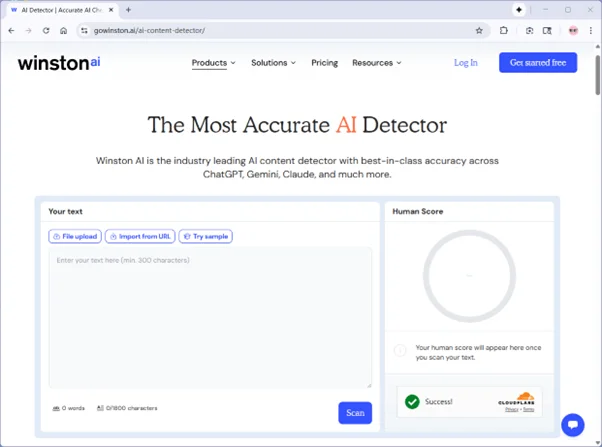
What Is Winston AI?
Winston AI is a web-based platform built to identify whether a piece of writing was created by a human or generated by artificial intelligence. It’s often used by teachers, editors, and content creators who need to confirm the authenticity of written work.
What Is Winston AI Detector?
The Winston AI detector is the tool’s core feature — it analyzes writing patterns, syntax, and semantic flow to determine if text comes from AI models such as ChatGPT, Claude, Gemini, or LLaMA. It can also detect paraphrased or lightly edited AI-generated text.
You can paste text directly into the web tool, upload full documents, or connect through Winston’s API for large-scale content checks. The platform supports multiple file formats and offers multilingual detection across major languages.
Extra Tools of Winston AI
Plagiarism Checker: Highlights duplicated or copied text and provides clear source tracking.
Similarity Checker: Compares multiple documents to spot reworded or reused sections.
Readability Score: Rates the clarity of writing and helps tailor it for general or expert readers.
Writing Feedback: Offers short suggestions on improving tone, structure, and flow.
Grammar Checker: Finds grammatical and spelling mistakes without changing your phrasing
How Accurate Is Winston AI Detector?
Winston AI claims to reach near-perfect detection accuracy, trained on what it calls the largest dataset of human-reviewed text. It also promotes its ability to spot paraphrased or “humanized” AI writing while keeping false positives low. That sounds impressive — but I wanted to see how well those claims actually hold up.
To find out, I ran three simple tests using different kinds of writing: a fully AI-generated passage, a mix of human and AI text, and a version “humanized” by another tool. Here’s how each one went.
Test 1: Pure AI Text
Setup:
I started with a short 300-word essay written completely by ChatGPT-5.
There was no editing or rewriting — just raw AI output on an academic topic.
Results:
Winston AI labeled it as 0% human.
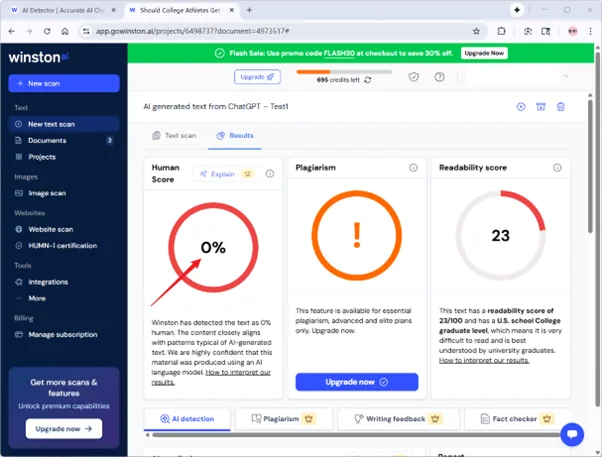
Observations:
That’s exactly what I expected. The detector clearly recognized the mechanical flow and repetitive rhythm typical of AI text.
It shows Winston’s core detection model performs well when dealing with unedited machine writing — a good baseline result to start with.
Test 2: Mixed AI + Human Writing
Setup:
For this one, I used a paragraph from an old student essay written before AI tools were available. Then, I asked ChatGPT-5 to continue the piece naturally.
The final sample was 454 words total — 187 human (41%) and the rest AI.
Results:
Winston AI scored the text as 3% human.
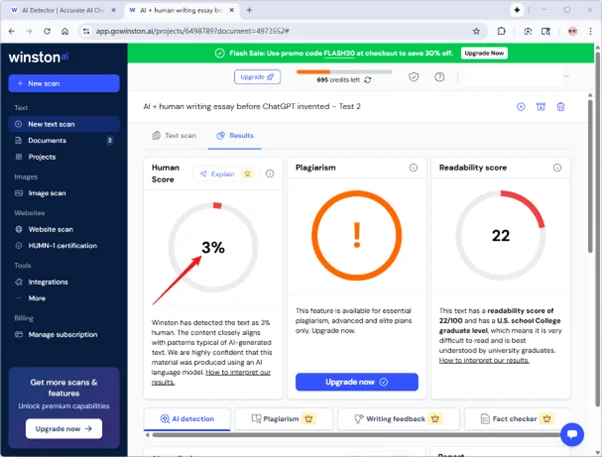
Observations:
That surprised me a little. Even though nearly half the piece was human-written, Winston treated almost the entire text as AI.
It seems that when AI-generated writing blends with authentic human sections, the detector leans heavily toward labeling everything as synthetic. This cautious approach helps reduce false negatives but may overflag genuine work.
Test 3: Humanized AI Text by QuillBot
Setup:
To finish, I took the fully AI-generated text from Test 1 and ran it through QuillBot’s AI Humanizer in its basic mode.
The goal was to see whether rephrased or “smoothed-out” AI writing could fool the detector.
Results:
Winston AI rated the result as 100% human.
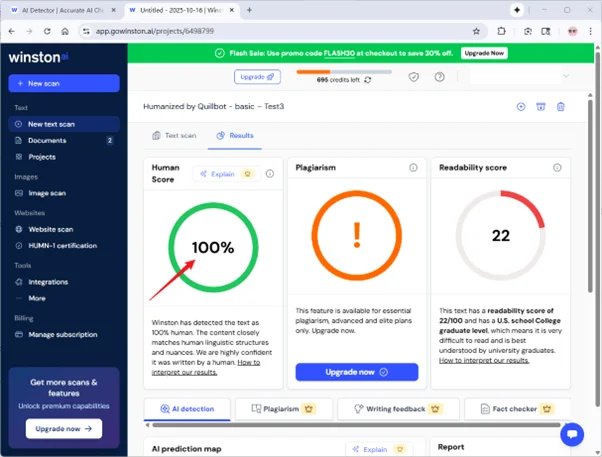
Observations:
This one really shows the challenge of AI detection. Even though the ideas were still machine-made, simple paraphrasing made the text completely undetectable.
It suggests that Winston’s current model — like most detectors — struggles with humanized AI text, especially when the rewording alters surface features like phrasing and syntax.
Pros and Cons of Winston AI Detector
Pros
Accurate overall detection: Winston AI performs reliably in identifying both fully AI-generated and mixed human-AI text, maintaining consistent precision across most test cases.
Integrated verification tools: Features like plagiarism, similarity, and readability checks streamline the review process by keeping everything in one place
Multilingual capability: Supports detection in several major languages, which is valuable for international writers and institutions that work across linguistic contexts.
Cons
Limited free access: The free plan offers only a small number of scans. Access to full reports and advanced options requires a paid subscription, which can be costly for individual users.
Tendency to overflag formal writing: Structured, well-edited text sometimes gets labeled as AI, which may frustrate academic writers submitting polished work.
Weakness with paraphrased AI text: Reworded or “humanized” AI content often passes as human, showing the tool’s limitations with advanced rewriting.
Winston AI Pricing
Winston AI offers both free and paid plans, structured around a credit-based system where each scanned word consumes credits.
Free Trial
New users get a 14-day free trial with 2,000 credits, enough to test all main features — including AI text detection, AI image detection, and document scanning. The trial also allows access to basic reporting and customer support. While it’s limited in volume, it’s enough to see how accurate the AI detection really is.
Paid Plans
After the trial, users can choose a monthly or yearly plan that expands the credit limit and unlocks more advanced options.
Paid tiers offer:
Higher text and document limits for frequent scanning.
Access to detailed PDF reports and plagiarism checks.
Main Difference Between Free and Paid
The free version is ideal for a quick trial or light use, but it’s limited by word count and lacks advanced tools like full plagiarism comparison or shareable PDF reports. Paid plans unlock larger credit pools, better reporting, and team collaboration features — all of which matter if you’re working on multiple documents or projects over time.
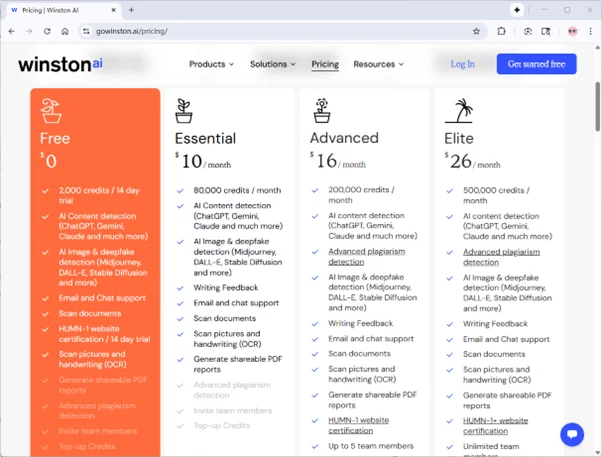
Can You Bypass Winston AI Detector?
The short answer is yes, it’s possible, but not by using random tricks or word swaps. The key is keeping the writing readable and consistent while reducing the AI detection score. Let me walk you through how that works in practice.
There’s a big difference between lowering an AI score and producing text that feels human. You can fool a detector by breaking up sentences, changing punctuation, or swapping synonyms, but that usually makes the writing sound awkward or forced. If you’re submitting essays, research papers, or articles, what really matters is readability. People — not detectors — are still your real audience.
That’s where EssayDone Humanizer comes in. I tested it to see whether it could handle both sides of that balance — sounding human while lowering the AI score. What stood out to me was how it doesn’t just rewrite for the sake of tricking detectors. It genuinely improves the writing. It lowers AI detection scores across most major tools, including Winston AI. It smooths out sentence rhythm, refines word choice, and removes the repetitive tone that usually gives AI text away. The result reads like something an actual person might write — clear, structured, and natural.
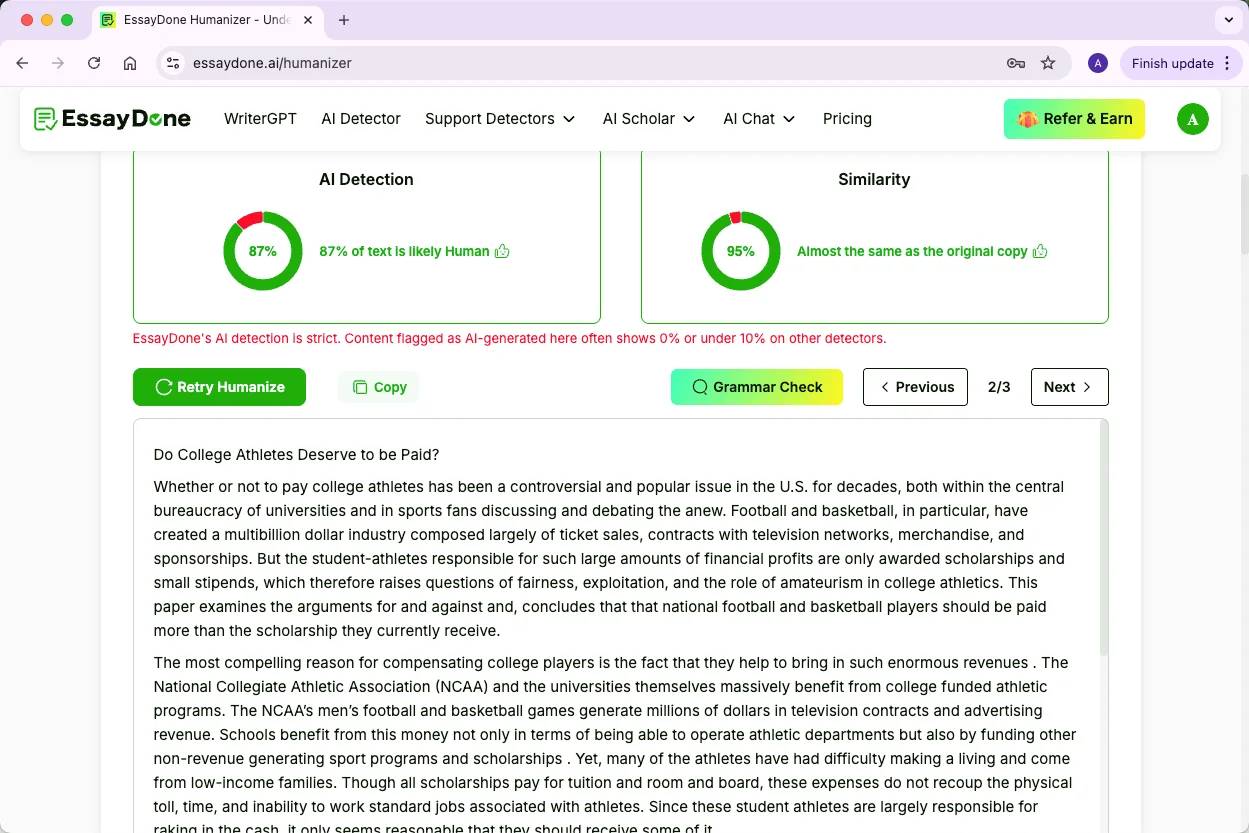
For the experiment, I took the same passage from my earlier Test 1, which Winston originally flagged as 0% human (in other words, fully AI). I ran it through EssayDone Humanizer once, using its standard mode, and then checked it again with Winston. This time, the result flipped completely — 100% human. What really caught my attention wasn’t just the score change; the rewritten text stayed smooth and professional. No odd phrasing, no broken logic, just refined language that still carried the same meaning.
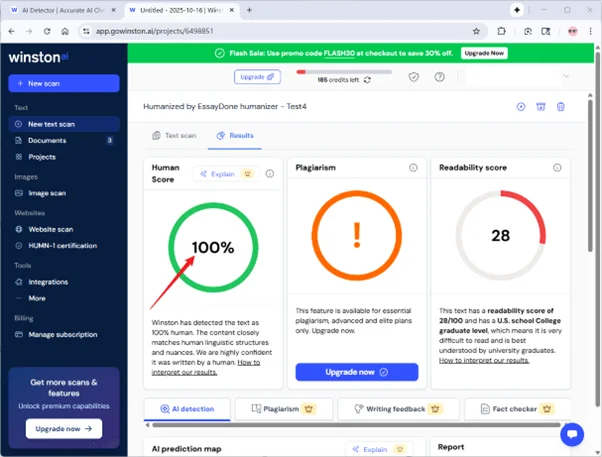
Alternatives to Winston AI Detector
Tool | Multilingual | Free Plan | Paid Plan | File Formats | Login Required | Sentence-Level Analysis | Extra Features |
Yes | Limited trial only | From $12.95/mo (200k words, 2k credits) | PDF, DOCX, DOC, site scans | Yes | Yes | Plagiarism check, fact check, readability, grammar, team tools, Chrome extension | |
GPTZero | Yes | 5,000 characters/test | From $14.99/mo (100k chars) | PDF, DOC, DOCX, TXT (50MB max) | Yes | Yes | Writing feedback, plagiarism check, citation tools |
Copyleaks | Yes (30+ langs) | 15,000 characters/test | From $16.99/mo (100k chars) | Copy-paste only | No | No | AI + plagiarism in one report, shared data hub, Google Docs add-on, Chrome extension |
ZeroGPT | Yes | Yes | From $9.99/mo | Text only | No | No | Plagiarism check, AI summarizer, AI paraphraser |
QuillBot | Yes | 1,200 words/test | From $8.33/mo, Unlimited Scan with premium | Multiple (DOCX, TXT, etc.) | No | Yes | Paraphraser, summarizer, grammar check, plagiarism check, text humanizer |
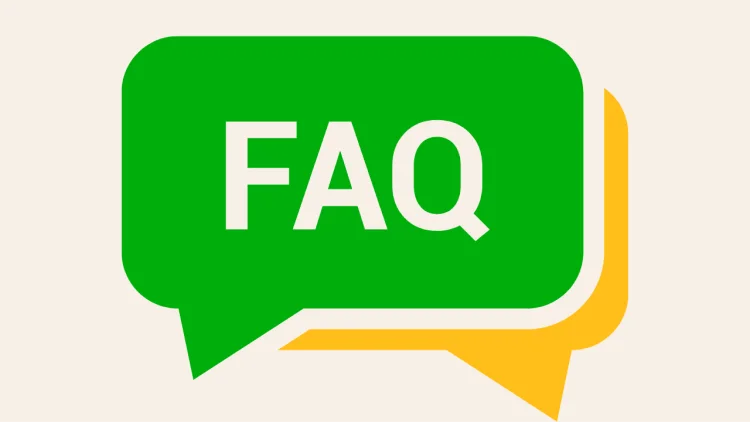
FAQ
Is Winston AI detector 100% accurate?
Not quite. From my own tests, Winston AI is one of the more precise detectors out there, but it’s not perfect. It can mislabel polished human text as AI or miss AI content that’s been paraphrased or rewritten. I’d say it’s reliable for quick checks, but not something to rely on blindly.
How to bypass Winston AI detector?
I’ve tried several methods, and most either ruin the flow or fail completely. The most effective approach I’ve found is using a tool like EssayDone Humanizer, which rewrites AI text to sound natural and contextually human. It keeps your tone, improves structure, and drops the AI score — all without making it sound robotic.
Will my professor use an AI detector?
Very likely, yes. Many universities now integrate AI detection into plagiarism systems like Turnitin or use third-party tools such as Winston AI. That’s why it’s better to focus on producing text that sounds natural and clearly human rather than trying to outsmart every detector.
Can I use AI detectors on my own work before submission?
Absolutely — and I recommend it. I often run my drafts through AI detectors before submission to check if any sections might flag as suspicious. It’s a good way to spot overly mechanical phrasing or detect overused AI patterns before your teacher does.
Are AI detectors legal?
Yes. Using AI detectors is perfectly legal. They’re just analysis tools — they don’t collect or publish your content without consent (though you should always double-check privacy policies). The real issue isn’t legality but how responsibly the results are used.
Is Winston AI detector free?
Winston does offer a free trial with limited credits — enough for short essays or initial tests. But for regular or professional use, you’ll need a paid plan. The paid tiers unlock full scans, report downloads, and other advanced features like plagiarism and image detection.
Conclusion
In this review, I walked through Winston AI detector’s features, accuracy, pricing, and real-world performance using different types of text. I also explored the challenges of AI detection and how humanized rewriting can affect results.
The goal was to give a clear, practical picture of what the tool does and where it may fall short.
I hope this article helps you better understand AI detectors, how they work, and what to consider when checking your own writing before submission.
